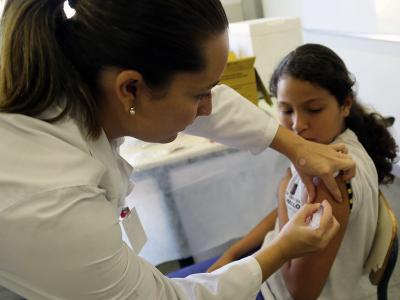Today in Morbidity and Mortality Weekly Report, researchers from the US Centers for Disease Control and Prevention (CDC) say that 13% of children who have died from seasonal flu this season had influenza-associated encephalopathy or encephalitis (IAE), a severe neurologic complication.
Included in these cases are four patients who had acute necrotizing encephalopathy (ANE), the most severe form of IAE, which can lead to varying degrees of brain dysfunction, inflammation, and other neurologic problems.
The data come from the Influenza-Associated Pediatric Mortality Surveillance System, which has tracked kids' flu deaths since 2004. Encephalitis is swelling of the brain, while encephalopathy is a more general term for brain dysfunction that is not primarily an inflammatory condition.
ANE in 4 cases this season
The authors said the CDC began receiving reports of ANE in children who died from flu in January, and the agency contacted state health departments to ascertain whether any pediatric flu-related deaths with IAE also involved a diagnosis of ANE.
As of February 8, the most recent date used in the study, 68 US children had been confirmed to have died from seasonal influenza. Among them, 9 had IAE (13%). (As of the CDC's latest FluView report on February 21, US pediatric flu deaths had risen to 86.)
The authors said that, of the 9 pediatric deaths this season with IAE, 4 patients had fatal ANE. All 4 ANE deaths involved children under the age of 5 years, and all had laboratory-confirmed influenza A (H1N1). Two of the 4 children had been vaccinated against flu, 2 received the antiviral drug oseltamivir (Tamiflu), and all required mechanical ventilation. The other 7 children who died did not receive the 2024-25 flu vaccine.
Fifty-four percent of patients with fatal IAE had no underlying medical conditions, and only 20% had received flu vaccination 2 or more weeks before illness onset.
Unknown if numbers are to be expected
The authors compared IAE and ANE records among pediatric influenza deaths seen in the past 15 years. From the 2010-11 to 2024-25 flu seasons, officials reported 1,840 US pediatric flu-associated deaths, of which 166 (9%) involved IAE, ranging from 0% (2020-21 season) to 14% (2011-12 season).
Of the 166 fatal pediatric flu-related patients with IAE, the median age was 6 years, 52% were female, and 40% were non-Hispanic White. In total 119 patients (72%) had influenza A, and 46 (28%) had influenza B virus infection.
The vast majority of IAE patients (93%) required mechanical ventilation. Other documented acute complications included acute respiratory distress syndrome (57; 34%), pneumonia (54; 33%), and sepsis (47; 28%). All but 11 patients died while hospitalized.
Because no dedicated national surveillance for IAE or ANE exists, it is unknown if the numbers of cases this season vary from expected numbers.
"Because no dedicated national surveillance for IAE or ANE exists, it is unknown if the numbers of cases this season vary from expected numbers," the authors wrote. "Health care providers should consider IAE in children with febrile illness and clinically compatible neurologic signs or symptoms, including but not limited to seizures, altered mental status, delirium, decreased level of consciousness, lethargy, hallucinations, or personality changes lasting >24 hours."





















